
- Appointments
- Awards
- Bills & Acts
- Books & Authors
- Committees
- Deaths
- Defence
- Economic
- Environment
- Finance
- Important Days
- International
- Miscellaneous
- National
- Persons in News
- Places in News
- Regional
- Reports
- Resignations
- Science & Technology
- Sports
- Union Budget 2020-2021
- Highlights of Economic Survey
- February 2020 - Exams Resources
- Current Affairs - Quiz
- Current Affairs - Test
- Current Affairs - PDF
Current Affairs Feb 2020 - Science & Technology
1 - US astronaut Christina Koch returned to Earth after record space station mission
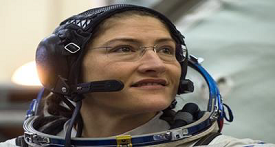
NASA astronaut Christina Koch returned back to Earth after spending 328 days on the International Space Station (ISS). She arrived in space in March 2019 alongside European astronaut Luca Parmitano and Russian cosmonaut Alexander Skvortsov.
Koch broke the record for the longest single spaceflight by a woman, the record previously set by NASA astronaut, Peggy Whitson. During her time in space, Koch worked on a host of science experiments and performed spacewalks including the first ever performed by two women.
2 - ISRO to prepare low-cost satellite launch vehicles
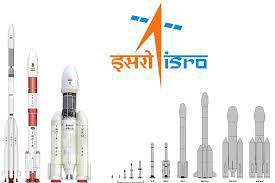
The Indian Space Research Organisation (ISRO) announced to prepare low-cost satellite launch vehicles costing around 30-35 crores each, which can put into orbit satellites weighing 500 kg. The first such launch from India is expected to take place by June 2020.
With these low cost satellites, ISRO will be able to cater to micro, mini and medium segments of the market, Haridas TV etc. ISRO has planned $1,600 million for launch vehicles.
3 - Indian government unveiled new vaccine to control classical swine fever

The government of India unveiled a new indigenously developed vaccine for controlling classical swine fever. CSF is a highly contagious fatal pig disease. Uttar Pradesh-based Indian Council of Agricultural Research (ICAR) - Indian Veterinary Research Institute developed the new vaccine.
Features of vaccine
It gives immunity for two years as compared to 3 to 6 months protection under the currently used vaccines.
It is much cheaper than previous one.
The new vaccine will be a part of the governments One Health Initiative.
4 - Astronomers discovered Ultramassive Galaxy XMM-2599 from early universe

The International team of astronomers led by scientists at the University of California, United States(US) discovered Ultramassive Galaxy XMM-2599 from early universe that grew rapidly in the universe's early days and then went quiet surprisingly fast. Ultramassive Galaxy XMM-2599 was formed by a mass of more than 300 billion suns, even before the universe was 2 billion years old.
XMM-2599 formed most of its stars in a huge frenzy when the universe was less than 1 billion years old, and then became inactive by the time, the universe was only 1.8 billion years old.
5 - NASA planned to send probes to map poles of the sun
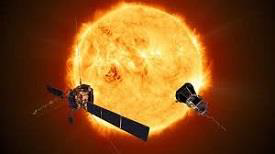
NASA (National Aeronautics and Space Administration) of the United States and the ESA (European Space Agency) has planned to send space probes toward the Sun to take a unique look at its blazing poles. NASAs newly launched European spacecraft called as Solar Orbiter will take the first photos of the sun's poles and probe its violent eruptions.
Solar orbiter can take images of the largest holes in its atmosphere and can take measurements of the mysterious forces that create space.
6 - Pangolin identified as the host of Corona Virus in China

The pangolin was reported to be the most likely intermediate host of Corona Virus in China. Pangolin is the animal that passed the new virus to humans. Pangolins or scaly anteaters are mammals. They are considered to be the world's most trafficked non-human mammal. The deadly coronavirus outbreak in China spread from bats to humans through the illegal traffic of pangolins.
Coronaviruses (CoV) causes illness ranging from the common cold to more severe respiratory diseases. A novel coronavirus is a new strain that has not been previously identified in humans.
7 - COVID-2019 is official name for disease caused by new corona virus

According to the World Health Organization(WHO), the official name for the disease caused by the new corona virus is COVID-2019. The International Committee on Taxonomy of Viruses (ICTV) has named the new virus as severe acute respiratory syndrome coronavirus 2 (SARS-CoV-2).
The new name is taken from the words "corona", "virus" and "disease", with 2019 representing the year that it emerged (the outbreak was reported to the WHO on 31 December).
8 - UKs start-up launched 1st big batch of satellites
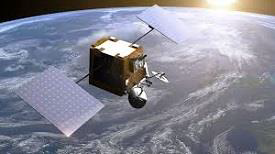
The UK-based OneWebcompany launched 34 satellites into orbit on a single Soyuz rocket, from Baikonur port, Kazakhstan so as to have the full network in operation by the end of 2021. The satellite batch will be dropped into one of 12 planes planned for the constellation. It was Arianespaces 50th Soyuz mission. Arianespace has planned to perform 19 more medium-lift Soyuz from three spaceports by 2021.
OneWeb start-up is creating a mega-constellation in the sky to deliver broadband internet to all corners of the globe.
9 - Scientists discovered the nearest known planet 2MASS 1155-7919 b

Scientists of Rochester Institute of Technology discovered the nearest known baby giant planet named as "2MASS 1155-7919 b". The planet is situated in the Epsilon Chamaeleontis Association, at 330 light-years from solar system. 2MASS 1155-7919 b is closer to Earth and orbits a star that is about 5 million years old.
The discovery of new planet will unveil how gas giants form. 2MASS 1155-7919 b appears like cool young object with 10 times the mass of Jupiter.
10 - ISRO planned to launch 10 Earth Observation Satellites in 2020-21
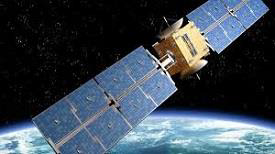
The Indian Space Research Organisation has planned to launch 10 Earth Observation Satellites in 2020-21. It includes new categories such as the first Geo Imaging Satellite, GISAT-1 along with three communication satellites and two navigation satellites. The upcoming EO satellites include radar imaging satellites RISAT-2BR2, RISAT- 1A and 2A; Oceansat-3 and Resourcesat-3/3S.
EO satellites are used for military, for keeping an eye on the borders, land and agriculture watch, provides all-weather report and 24-hour information to security agencies.